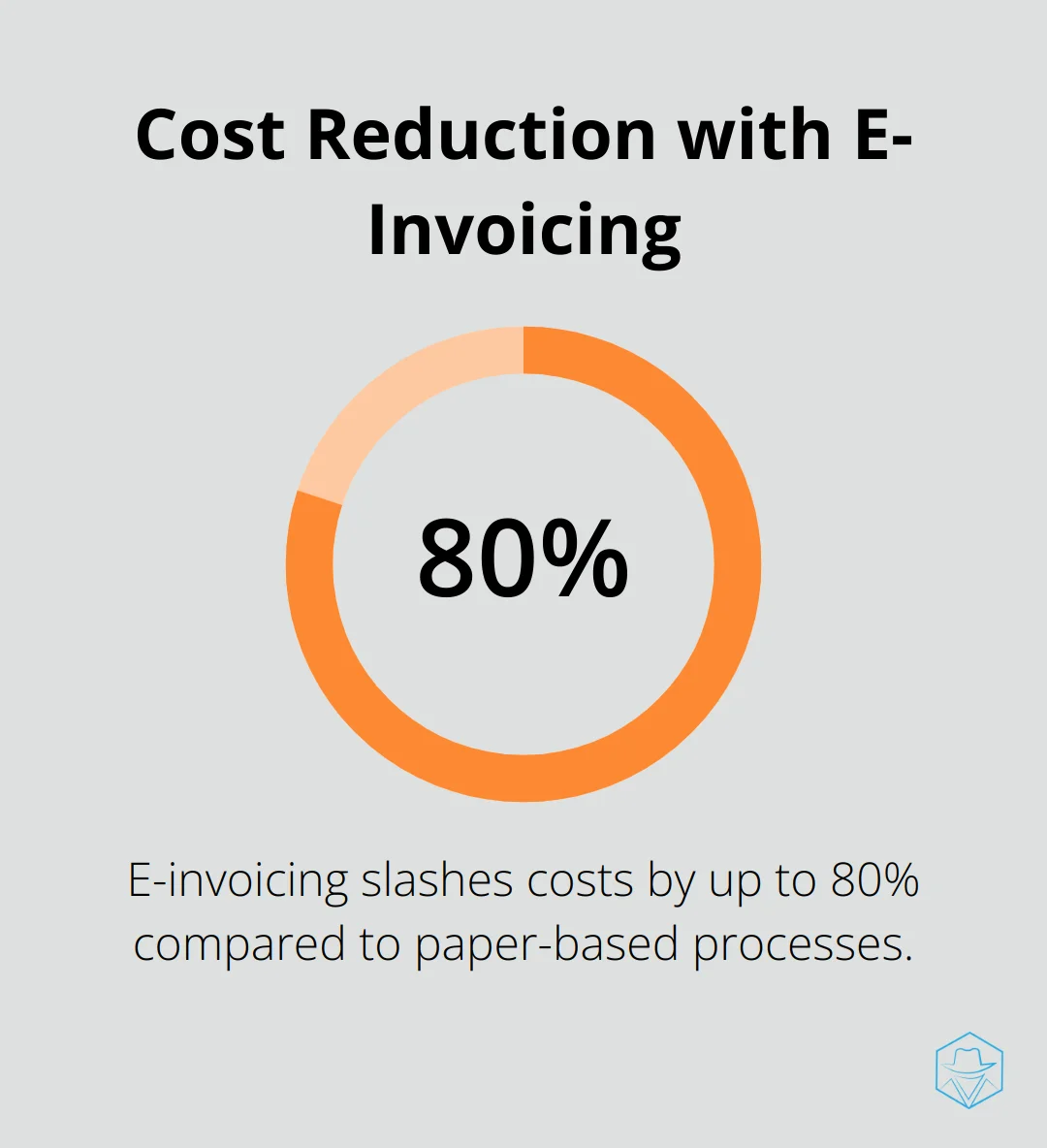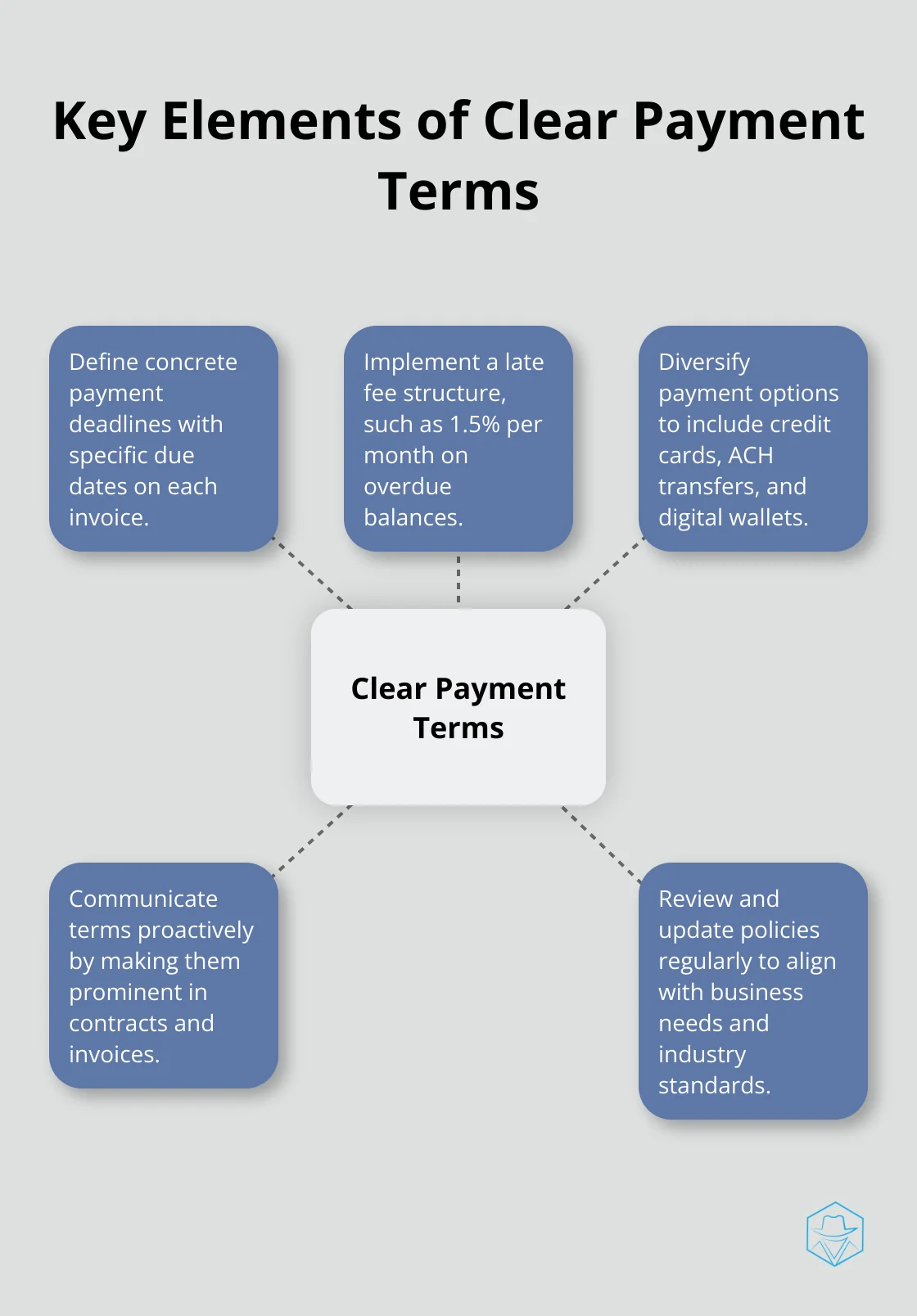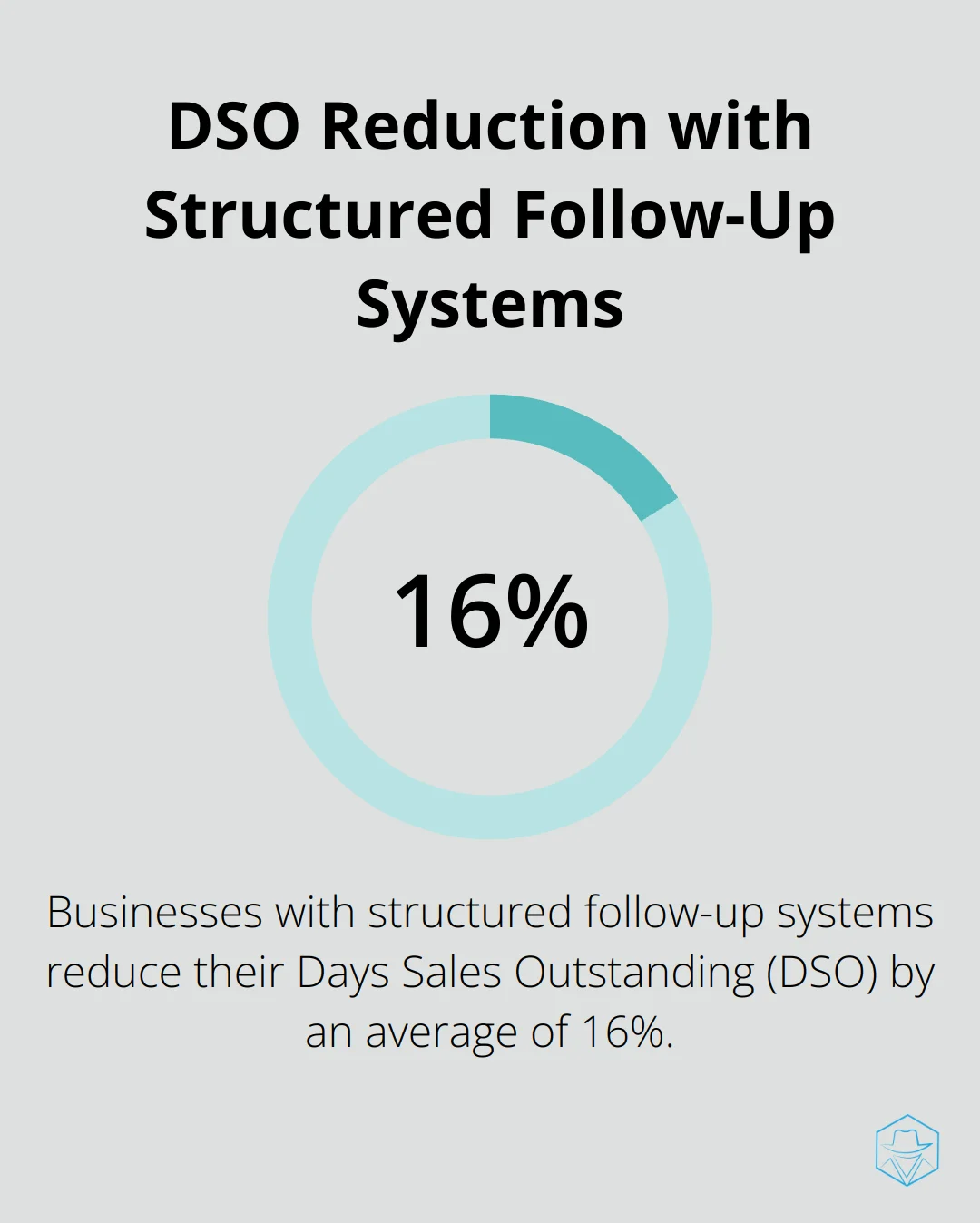Effective Strategies for Managing Accounts Receivables

At Drop Cowboy, we understand the challenges businesses face when it comes to managing accounts receivables. Effective management of accounts receivables is crucial for maintaining healthy cash flow and ensuring your company’s financial stability.
In this post, we’ll explore practical strategies to streamline your invoicing process, establish clear payment terms, and implement proactive follow-up techniques. These tactics will help you optimize your accounts receivable management and boost your bottom line.
How to Streamline Your Invoicing Process
Embrace Automation for Efficiency
Implementing an automated invoicing system will transform your accounts receivable management. A study by Billentis reveals that e-invoicing can slash costs by up to 80% compared to paper-based processes. Automation not only saves time but also minimizes human errors.

You should look for software that integrates with your existing accounting system and offers features like automatic invoice generation, scheduled sending, and payment reminders.
Craft Clear and Detailed Invoices
The clarity of your invoices directly impacts your payment speed. Include all necessary details such as itemized charges, payment terms, and due dates. A study by Xero found that invoices with clearly stated payment terms are paid an average of two weeks faster than those without. Don’t forget to add your company’s payment details and multiple payment options to make it easy for clients to settle their bills.
Leverage Recurring Billing for Regular Customers
For clients with ongoing services or subscriptions, setting up recurring billing will prove invaluable. This approach ensures consistent cash flow and reduces the administrative burden on your team. According to a report by MGI Research, businesses using recurring billing models grow their revenue 5 times faster than those who don’t. Plus, it’s convenient for your customers, potentially improving retention rates.
Utilize Digital Signatures
Incorporating digital signatures into your invoicing process can speed up approvals and payments. A study by Adobe found that 61% of businesses using digital signatures see contracts returned within a day (compared to 48% for those not using e-signatures). This quick turnaround can significantly reduce your Days Sales Outstanding (DSO).
Implement Real-Time Invoice Tracking
Real-time invoice tracking allows you to monitor the status of each invoice, from creation to payment. This visibility helps you identify bottlenecks in your process and take proactive measures to address them. Many modern invoicing systems offer this feature, providing you with valuable insights into your cash flow. Some CRM systems even offer integrations for enhanced tracking and communication.
Now that we’ve covered how to streamline your invoicing process, let’s move on to establishing clear payment terms and policies. These elements work hand in hand to create a robust accounts receivable management system.
How to Set Clear Payment Terms
Define Concrete Payment Deadlines
Setting specific due dates for payments forms the foundation of effective accounts receivable management. Atradius research reveals that 39% of invoices in the U.S. are paid late, underscoring the need for clear deadlines. We recommend you establish a standard payment term (such as net 30) and state the exact due date on each invoice. This approach eliminates misinterpretation and sets clear expectations for your clients.

Implement a Late Fee Structure
Late fees serve as an effective deterrent against delayed payments. The Credit Research Foundation found that 61% of late payments result from administrative errors or delays in sending invoices. A late fee structure creates a financial incentive for timely payments. Consider implementing a fee of 1.5% per month on overdue balances (but check local regulations regarding maximum allowable late fees).
Diversify Payment Options
Offering multiple payment methods can significantly accelerate your collections. A PYMNTS.com report indicates that businesses offering four or more payment options can reduce their Days Sales Outstanding (DSO) by up to 47%. Accept credit cards, ACH transfers, and even newer methods like digital wallets. While some payment methods incur fees, the improved cash flow often outweighs these costs.
Communicate Terms Proactively
Clear communication of your payment terms is essential. Don’t hide your terms in fine print – make them a prominent part of your contracts and invoices. Xero’s study found that invoices with clearly stated payment terms are paid on average two weeks faster than those without. Discuss payment terms upfront with new clients and periodically remind existing ones.
Review and Update Policies Regularly
Consistency proves key when enforcing your payment terms. Regularly review and update your policies to ensure they align with your business needs and industry standards. This practice helps you maintain fair and effective payment terms that benefit both your business and your clients. Setting clear KPIs aligned with your business objectives can help you track the effectiveness of your payment terms.
Setting clear, fair, and well-communicated payment terms paves the way for smoother accounts receivable management and improved cash flow. Now, let’s explore how proactive follow-up and collection techniques can further enhance your accounts receivable process.
How to Follow Up on Overdue Accounts
Implement a Structured Follow-Up System
A systematic approach to overdue accounts improves cash flow and reduces bad debt risk. The Credit Research Foundation reports that businesses with structured follow-up systems reduce their Days Sales Outstanding (DSO) by an average of 16%. We recommend you categorize overdue accounts based on delay length and amount owed. This prioritizes efforts and tailors approaches for each category.

For accounts a few days overdue, send a friendly reminder email or text message. Escalate to phone calls or registered letters for longer overdue accounts. Many accounts receivable management systems offer automatic reminders at preset intervals, which ensures no account oversight.
Master Effective Communication
Your communication style about overdue payments impacts collection success. Atradius found that 48% of customers delay payments beyond agreed terms, often due to miscommunication. Train your staff to communicate clearly, professionally, and empathetically.
Start customer interactions with a polite inquiry about the delay reason. This might reveal legitimate issues like invoice disputes or temporary cash flow problems. Understanding the root cause allows you to work towards mutually beneficial solutions.
For customers facing financial difficulties, consider payment plans. The National Federation of Independent Business reports that businesses offering flexible payment options recover 60% more debt than those who don’t. Always document agreements in writing to prevent future misunderstandings.
Leverage Technology for Efficient Follow-Ups
Technology transforms overdue account management. Platforms like Drop Cowboy offer powerful tools for automated follow-ups. Our Mimic AI™ technology creates personalized voicemail messages sent directly to customers’ voicemail boxes without ringing their phones. This non-intrusive approach increases response rates by up to 40% compared to traditional collection calls.
SMS integration enables text reminders, particularly effective for smaller overdue amounts. Mobilesquared reports that text messages have a 98% open rate, making them an excellent channel for payment reminders.
Prioritize Customer Relationships
Follow-ups should collect payment and maintain positive customer relationships. A balanced approach preserves business relationships while ensuring timely payments. The American Collectors Association found that 95% of consumers value respectful and professional communication during the collection process.
Monitor and Adjust Your Strategy
Regular analysis of your follow-up strategy’s effectiveness allows for continuous improvement. Track key metrics like DSO, collection rate, and customer feedback. Adjust your approach based on these insights to optimize your accounts receivable management process.
Final Thoughts
Effective management of accounts receivables forms the foundation of financial health for any business. You will improve your cash flow and reduce bad debt risk when you implement the strategies we discussed. Drop Cowboy offers tools to support businesses in this area, with features like automated voicemail and SMS messaging to enhance follow-up processes and improve collection rates.
You can streamline your accounts receivable management, save time and resources, and improve your cash flow when you leverage our communication solutions. Start by assessing your current accounts receivable processes and identify areas for improvement. Then, implement these strategies gradually and monitor their impact on your cash flow and customer relationships.
With persistence and the right tools, you will soon see a marked improvement in your management of accounts receivables. This improvement will set your business on a path to greater financial stability and growth. Regular review and adjustment of your accounts receivable processes will help you stay ahead of changing business needs and customer behaviors.
blog-dropcowboy-com
Related posts

March 5, 2025
Best Practices for Effective Text Message Marketing
Boost engagement with text message marketing best practices. Discover tips, tools, and strategies to make your campaigns effective and impactful.

April 21, 2025
Is Klaviyo Worth the Cost? Pricing Explained
Explore Klaviyo pricing and value. Learn if its features justify the cost for your marketing strategy. Make informed decisions with our analysis.

July 20, 2025
Top Competitors of Infobip: A Comprehensive Guide
Explore Infobip competitors in this comprehensive guide. Analyze top providers and discover who stands out in the communication platform landscape.

March 21, 2025
How to Boost E-commerce Sales with SMS Marketing
Boost e-commerce sales effortlessly with SMS ecommerce strategies. Discover practical tips and proven methods to engage customers and increase revenue.

September 3, 2025
Stay Compliant A Guide to Global Messaging Regulations
Explore global messaging compliance to keep your business on track with regulations. Learn essential strategies for effective international communication.

July 20, 2025
Telesign SMS Pricing: What You Need to Know
Learn about Telesign SMS pricing to make informed decisions for your business with our comprehensive breakdown of costs, benefits, and alternatives.